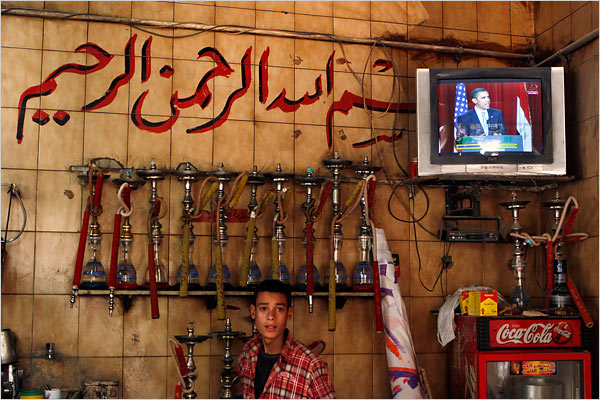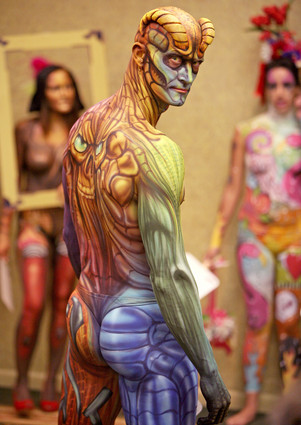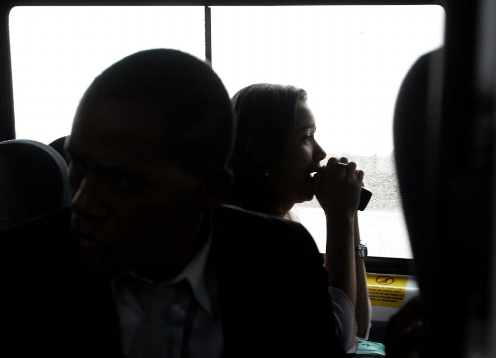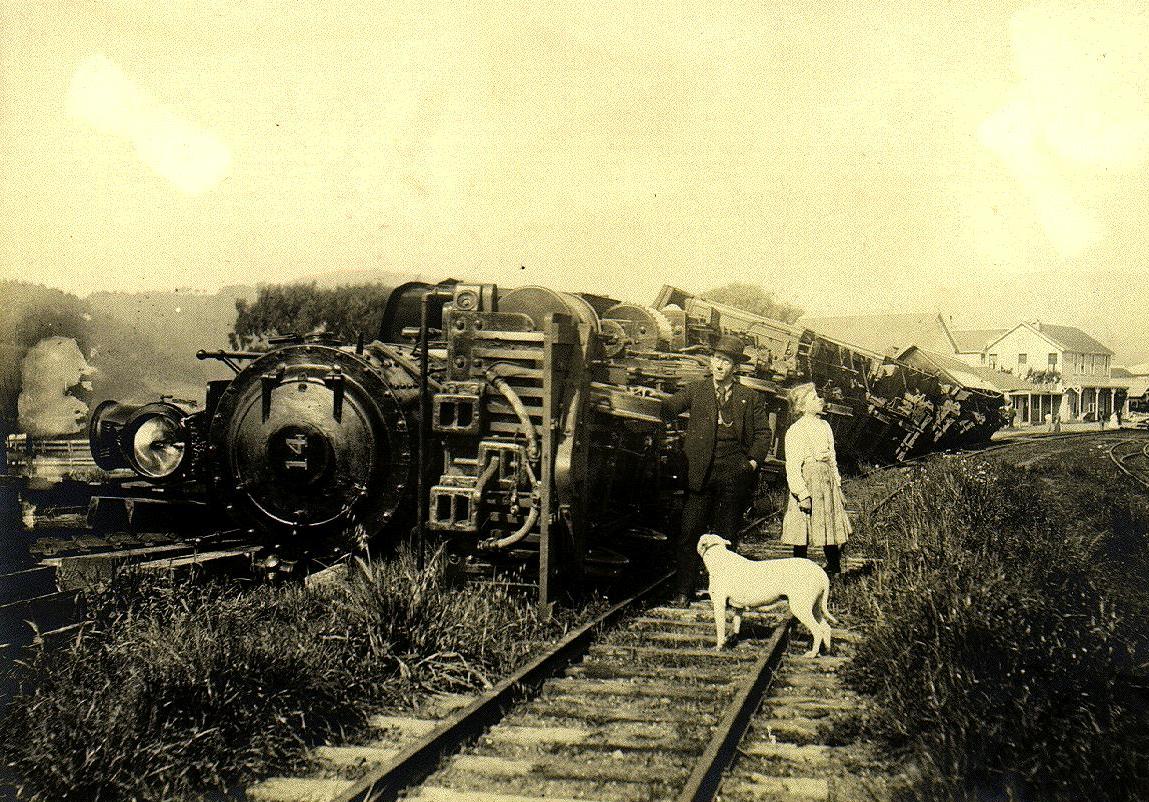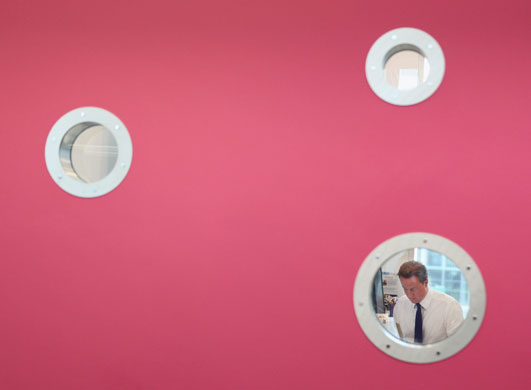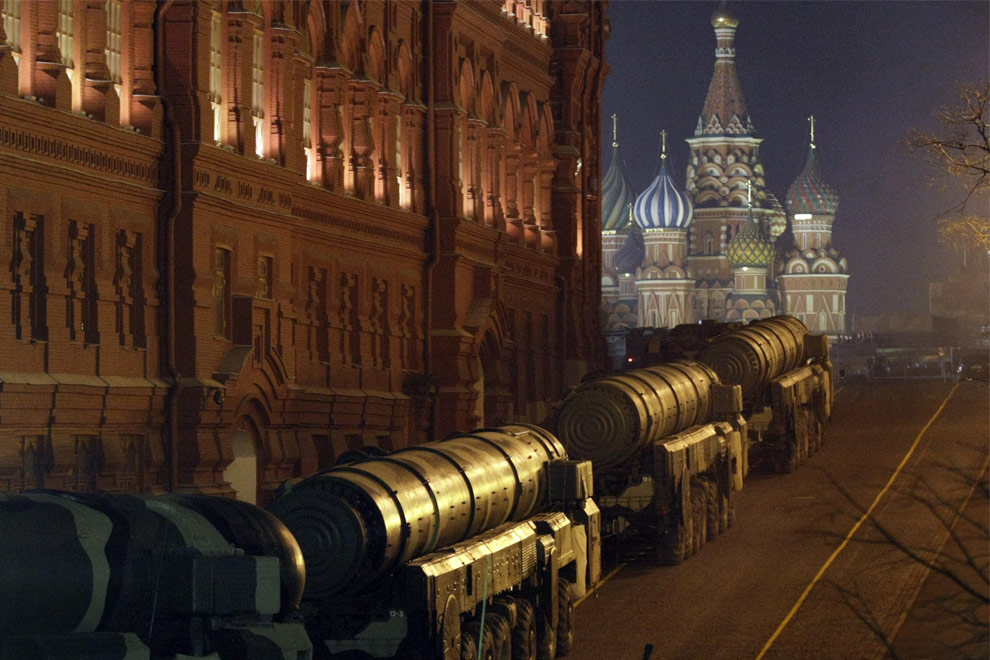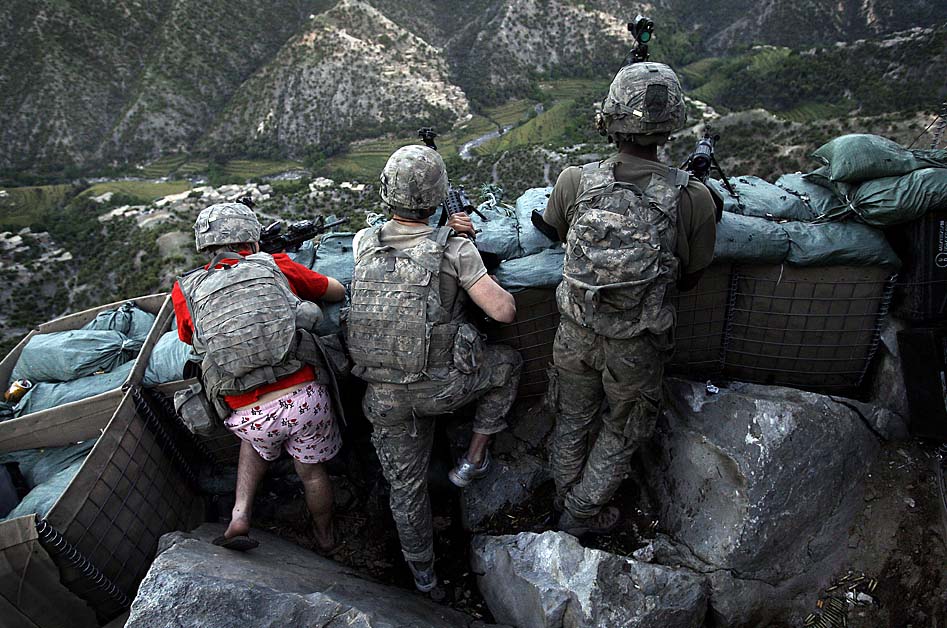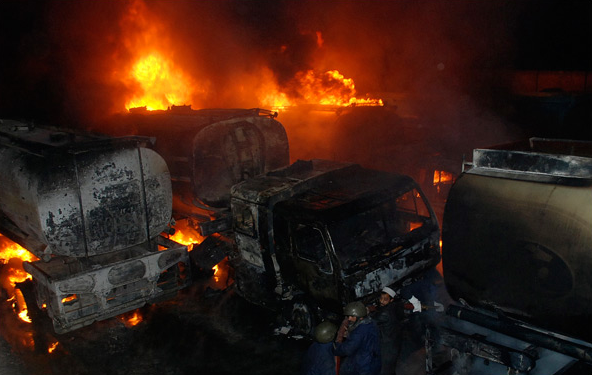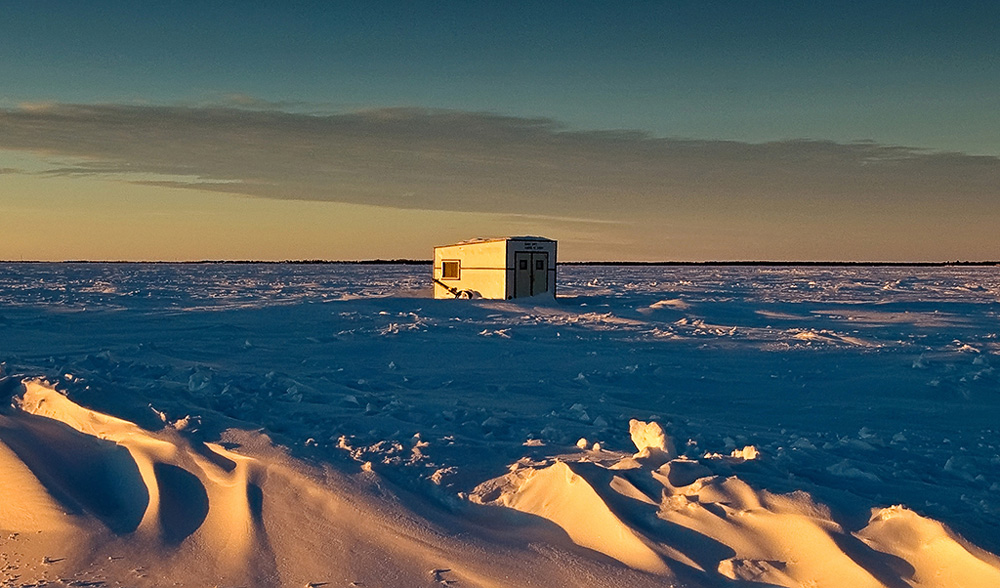One of the questions one might raise about coverage of the Middle East is how much to feature women under the veil. Despite the range of positions in the region about body covering, the tendency in the US is to feature burqas (of whatever kind or name) when emphasizing deficits of rights and modernization. But, of course, the matter is not so simple.

For the record, these women are wearing the Afghan chadiri. If you look closely at this photo, you can see that it might confound several assumptions about living under the veil. Instead of uniformity, each outfit is individually decorated. Instead of a primitive society, the women are standing in a pleasantly modern setting. Most peculiar, perhaps, is that they are standing to be photographed. How, one might think, can a photograph matter when their faces can’t be seen? (To see how mistaken this question can be, go here.) They may expect to be recognized by what can be seen, or they may be indulging the request for a photo precisely because they are protected from public scrutiny.
These subtleties may be obvious inside their culture, whereas to the Western gaze the women are interchangeable: anonymous, uniform, and uniformly subjugated. Given their confinement to private life, in public they are not citizens but merely women, interchangeable women.
Before anyone gets too righteous about the Western alternative, we should take a look at this:
These Florida State fans are definitely not under the veil. They are, however, another example of cosmetic cloning. (Let’s set the little girl aside, although notice that she is a Florida State woman in training, right down to the bracelet.) Sure, we can identify them as separate individuals: one belly has a navel stud, one doesn’t, and the third has a tattoo, what more do you want? But they are more closely entrained than the three women in the first photograph: bare midriffs, identical shirts, hats, buttons, bracelets, hairstyles, makeup, and gestures. Even their faces look like close copies of each other.
We could point out that they are free to choose how they display themselves in public, but this doesn’t seem to be a great example of independent decision making. My point is that they might as well be in burqas–they are interchangeable women, as much under the sway of gender-specific norms for appearing in public as anyone else. Their aggressive femininity is little different than the gender segregation of the burqa; both might be labeled variant forms of cosmetic fundamentalism.
None of this need be complicated: many people rightly oppose any gender rules that confine women to subordinate status. But if images of women are to be used to subordinate East to West on the grounds that a denial of visibility is a denial of rights, then it’s only fair to raise equivalent questions about how rights are being used to keep women locked into limited gender roles closer to home.
Photographs by Margaret Orwig and Stephen M. Dowell/Orlando Sentinel.

